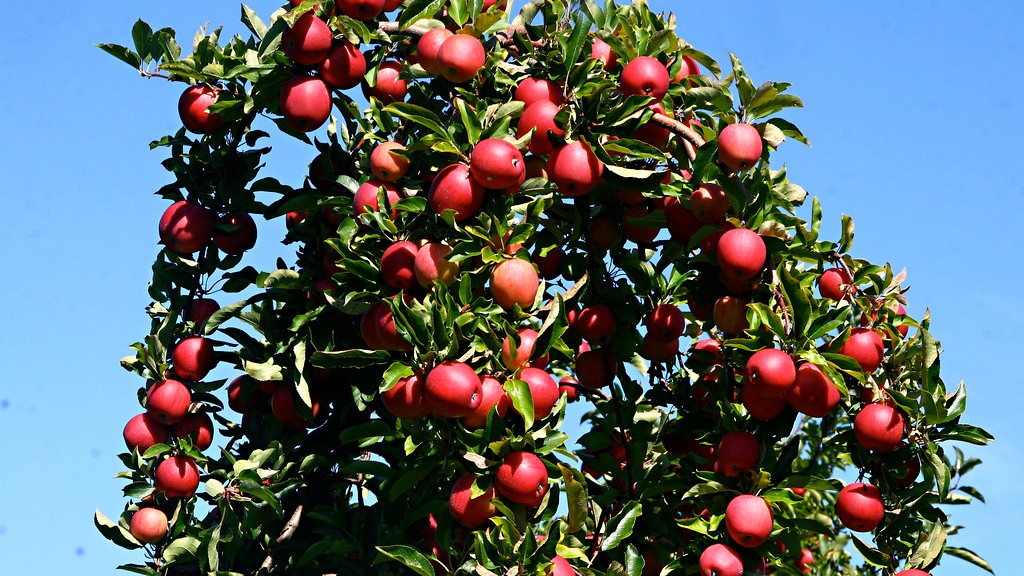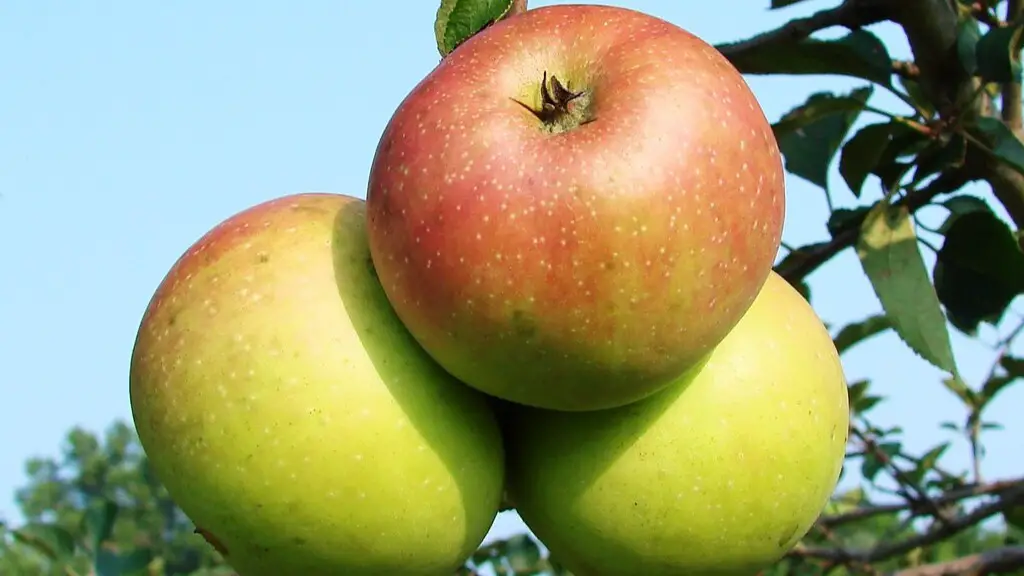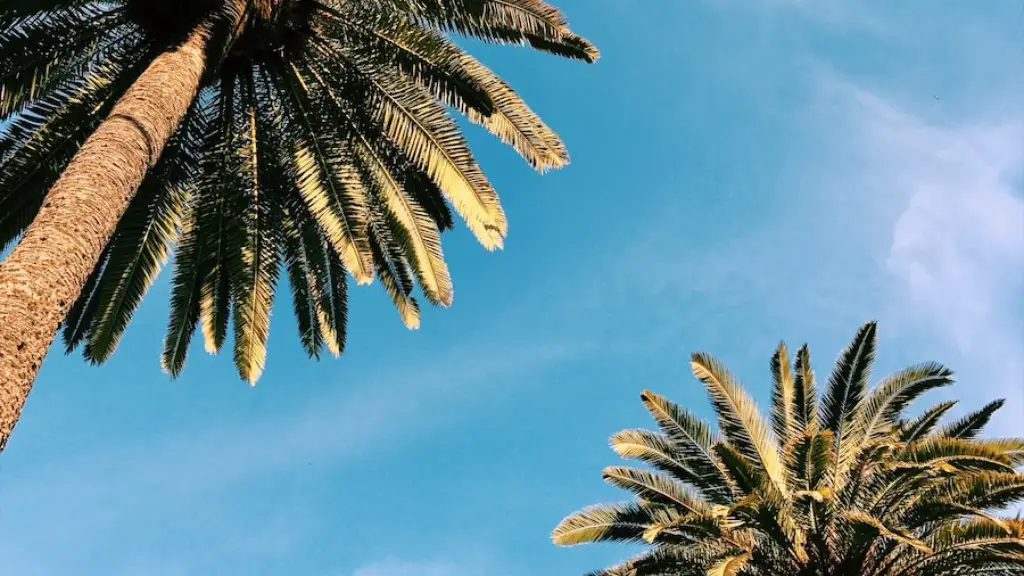Apple tree leaves curl for numerous reasons, the primary one being environmental stress. Contraction of leaf cells in reaction to environmental stimuli causes the leaves of an apple tree to curl. Apple leaves also respond to temperature fluctuations, including extreme heat and cold, by curling. Additionally, nutrient imbalances, such as high levels of nitrogen, can lead to leaf curling. Furthermore, abiotic factors, like strong wind, drying air, high light exposure, and ultraviolet radiation, cause curling in apple tree leaves. Finally, pest infestations and plant diseases can weaken the apple tree, leading to the contraction of the leaves.
Environmental Stress
Environmental stress results in the contraction of leaf cells, which causes the leaves of an apple tree to curl. Different environmental conditions can trigger leaf curling, such as extreme heat or cold. Apple trees require specific temperatures to thrive, and any deviation from that can cause leaf curling. For example, in hotter climates, apple tree leaves may curl as a result of the stress of attempting to stay cool. The same happens in colder climates, where apple tree leaves can become damaged from cold temperatures and curl to protect themselves.
In some cases, you may observe leaf curling as a result of phototropism, in which the leaves of an apple tree curve towards the light in order to increase their exposure. Additionally, environmental factors like wind, humidity, and other precipitation can cause leaf curling. The leaves of an apple tree contract when exposed to these conditions in order to adapt.
Nutrient Imbalance
Nutrient deficiencies and an excess of certain minerals can also lead to leaf curling. To ensure healthy growth, apple trees need to have a balanced supply of macro and micronutrients. When certain minerals are lacking or there is an overload of others, this can cause the leaves of an apple tree to curl. You can ease the problem by ensuring your apple tree is receiving adequate nutrition in the form of fertilizers prescribed by certified agronomists.
High nitrogen levels can be particularly problematic. Too much nitrogen can result in ‘floppy’ leaves because the tissues become weaker and more prone to curling caused by environmental factors. Additionally, under high nitrogen conditions, the leaves may develop an unsightly chlorotic yellow color. Nitrogen levels should always remain in balance for apple trees to remain healthy and show proper foliar growth.
Abiotic Factors
Abiotic factors, also referred to as non-living factors, can also cause leaf curling in apple trees. Abiotic conditions like wind, air drying, and strong light (also known as photobleaching) can lead to curling of tender apple tree leaves. Additionally, ultraviolet radiation can cause desiccation in apple tree leaves, leading to contraction and eventually curling. Abiotic conditions can be difficult to mitigate if you do not understand the underlying causes.
If abiotic conditions are present, it can be useful to understand the root cause of the stress and implement effective control measures. Interventions such as maintaining adequate soil moisture, avoiding the use of fanning, and ensuring adequate amounts of mulch and leaf cleaning can help mitigate abiotic stress in apple trees. Additionally, using shade cloth can help protect apple trees from strong light and reduce the degree of leaf curling.
Pests and Diseases
Pests and plant diseases can also lead to curling of apple tree leaves. Insect infestations can weaken the tree, making it more prone to damage from environmental stress. Additionally, certain plant diseases such as leaf spot, cankers, and blight can cause leaves to curl in an effort to protect the tree from infection. Common culprits include fungi, bacteria, viruses, and nematodes.
For prevention, it is important to maintain adequate sanitation and keep an eye out for symptoms of disease. Removing fallen leaves from the base of the tree and keeping the area around it free from weeds and debris can also help reduce infestation. Inspecting the tree for early signs of disease is important for effective pest and disease control. Applying appropriate fungicides, insecticides, and other control agents can help reduce the impact of pests and diseases.
Temperature Fluctuations
The leaves of an apple tree are capable of responding to temperature fluctuations by curling. Temperature extremes can cause the leaves to curl, as the tree attempts to protect itself from the heat or cold. In extreme weather, you may find the leaves of an apple tree contracting and turning inward, as they try to protect themselves from the high temperatures. If temperatures remain too high or cold, the leaves’ capacity to photosynthesize can be severely limited.
When temperatures become extreme, apple trees need to be provided with additional protection. Installing shade screens or erecting wind-breakers can help shield the tree from excessive cold or heat, preventing the leaves from contracting. Furthermore, keeping the soil moist with regular waterings can also help provide some relief from temperature extremes.
Ultraviolet Radiation
Ultraviolet radiation can also cause curling in apple tree leaves. UV radiation can weaken the structure of the leaf, causing it to close in on itself in an attempt to protect the tree from further damage. Prolonged exposure to UV rays can also lead to rapid cellular death, reducing the chlorophyll content of the leaf.
Monitoring the amount of UV radiation your apple tree receives and ensuring it gets enough shade can help to reduce the risk of leaf curling. Pruning off dead and diseased branches can help improve air flow and further reduce the impact of UV radiation. You can also use ornamental trees to reduce UV exposure, as they create a physical barrier between the apple tree and direct sunlight.
Pest Infestations
Apple tree leaves can also curl in response to pest infestations. Infestations of aphids, mites, leafhoppers, and other insect pests can weaken the tree, making it more prone to damage from environmental stress. Depending on the severity of the infestation, leaf curling may also be a result of sap feeding injury. Additionally, apple trees can also contract their leaves in order to protect themselves from pests, such as leaf-miners.
If you suspect your apple tree has been infested, it is important to remove the pests as soon as possible. Spraying with neem oil or a botanical insecticide, such as pyrethrin, can help reduce re-infestation. Additionally, introducing beneficial insects to the area, such as ladybugs and lacewings, can be effective in controlling pest populations.
In conclusion, the leaves of an apple tree can curl for various reasons, some of which are environmental stress, nutrient imbalances, abiotic factors, pest infestations, plant diseases, and temperature fluctuations. Implementing suitable control methods and ensuring proper cultivation practices can help reduce the risk of leaf curling in apple trees.




